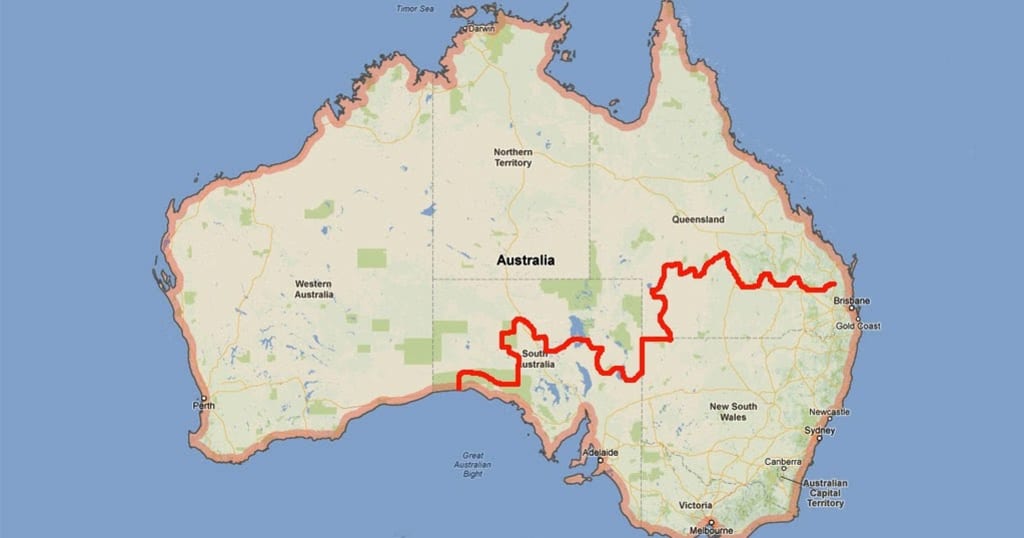Australia's Epic Fence: The Story Behind Its Massive Barrier
The Reason Behind Australia’s Vast Continental Fence

The world's largest fence stretches over 3,100 miles, spanning from Queensland to South Australia. If extended, it could link London to New York. Walking its length would take around six months. This massive barrier wasn't built to protect Australia's borders, which are naturally surrounded by water, nor to safeguard significant buildings. Its primary purpose is to separate certain animal species.
Construction began in the late 1800s as Australians sought to divide the bustling, lively areas, home to cities like Melbourne and Sydney, from the arid Outback. The fence, standing about 6 feet tall, was made using wooden posts and wire mesh. Some sections even have an additional electrified layer for enhanced effectiveness. Red and white lights were added for nighttime visibility, and a team of over 20 people works full-time to maintain it. Annually, local authorities spend around $750,000 on its upkeep.
The main reason for this extensive project was to control the dingo population. Dingoes, Australia's largest carnivorous mammals and apex predators, were causing significant problems for farmers, particularly in southern Queensland, where they often preyed on sheep. The fence has largely been effective, though not foolproof. Some dingoes still manage to breach it, and wild camels sometimes crash into it due to Australia's considerable camel population.
The fence's impact extended beyond controlling dingoes. With fewer dingoes inside the fence, kangaroo populations increased, leading to more competition with sheep for food. This shift affected not only larger species but also smaller animals and plant life, resulting in reduced biodiversity and soil quality. The fence also disrupted animal migration and seed dispersal, affecting even the sand dunes, which suffered from less grass cover.
Interestingly, researchers observed differences in kangaroo populations on either side of the fence. Kangaroos inside the fence were generally smaller and lighter, while those outside had larger feet and heads, likely due to the need to bulk up faster for survival. This disparity wasn't diet-related but rather a response to environmental pressures. The long-term effects on kangaroo genetics are still uncertain.
Domesticating dingoes isn't considered a viable solution. Though some believe dingoes were once pets in Australia, they are now as wild as wolves, hyenas, or coyotes. Most are solitary hunters with keen instincts, making taming them a challenging task. Removing the fence is not an option, and strict laws enforce its integrity. Leaving a gate open can lead to a three-month jail sentence, and damaging the fence can result in six months' imprisonment.
Australia has previously attempted to use fences to solve animal issues. Before the dingo fence, a serious rabbit invasion led to the construction of a three-part fence. This first fence, over 1,100 miles long, aimed to control the rabbit population, which had exploded after Thomas Austin released a few rabbits into the wild in 1859. Without natural predators, the rabbit population grew rapidly, causing significant agricultural damage. Despite various efforts, including offering substantial rewards for solutions, the fences proved largely ineffective. By 1902, rabbits had breached the first fence, and subsequent fences also failed to contain them.
The dingo fence, while the longest, isn't the strangest. In Turkey, a 164-foot aquarium fence ensures that an expensive villa's ocean view remains unobstructed, attracting tourists eager to see its diverse fish and octopus population. Maintaining this clear structure involved connecting it to the Aegean Sea via a buried pipeline, ensuring constant water flow. Security measures, including facial recognition cameras, protect the fence and its aquatic inhabitants.
Another unusual fence is New Zealand's bra fence in Central Otago. Starting in 1999 with four bras mysteriously appearing on a fence near Cardrona Valley Road, it quickly became a tourist attraction as more people added bras to the collection. Its popularity even caused traffic issues at times.
That's a wrap for today! If you found this interesting, give the video a like and share it with your friends. For more, click on these videos and stay on the bright side!
About the Creator
Enjoyed the story? Support the Creator.
Subscribe for free to receive all their stories in your feed. You could also pledge your support or give them a one-off tip, letting them know you appreciate their work.





Comments
There are no comments for this story
Be the first to respond and start the conversation.